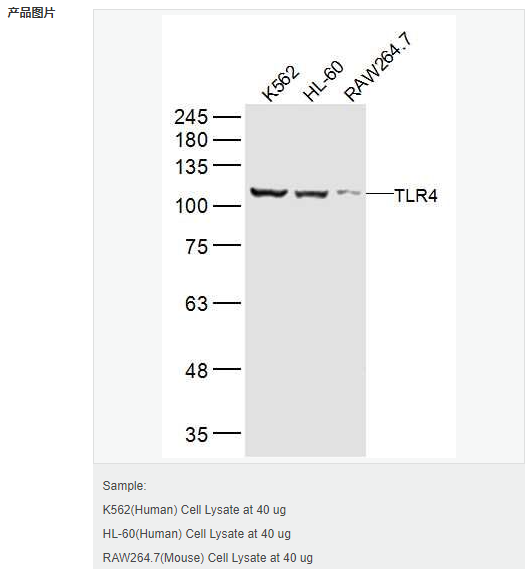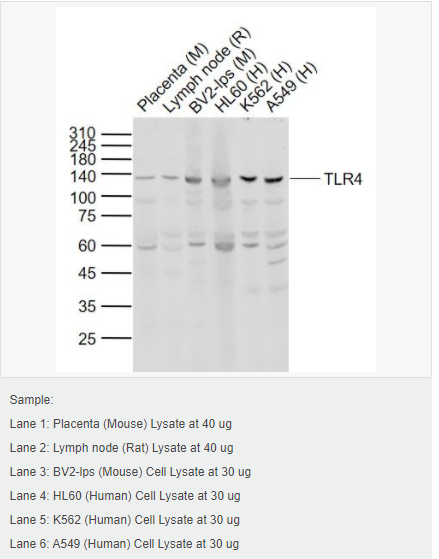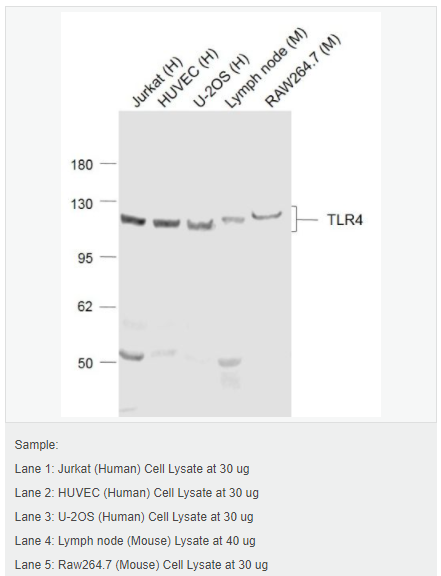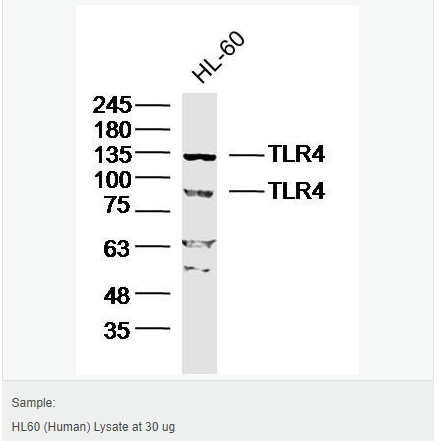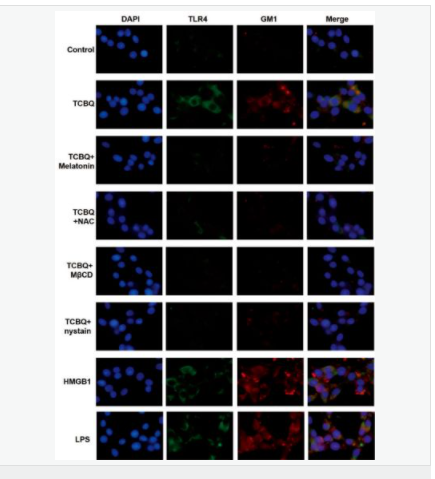

貨號(hào)
產(chǎn)品規(guī)格
售價(jià)
備注
BN41774R-50ul
50ul
¥1486.00
交叉反應(yīng):Human,Mouse,Rat,Cow(predicted:Pig,Horse,Rabbit,Sheep) 推薦應(yīng)用:WB,IHC-P,IHC-F,IF,ELISA
BN41774R-100ul
100ul
¥2360.00
交叉反應(yīng):Human,Mouse,Rat,Cow(predicted:Pig,Horse,Rabbit,Sheep) 推薦應(yīng)用:WB,IHC-P,IHC-F,IF,ELISA
BN41774R-200ul
200ul
¥3490.00
交叉反應(yīng):Human,Mouse,Rat,Cow(predicted:Pig,Horse,Rabbit,Sheep) 推薦應(yīng)用:WB,IHC-P,IHC-F,IF,ELISA
產(chǎn)品描述
| 英文名稱 | TLR4 |
| 中文名稱 | Toll樣受體4抗體 |
| 別 名 | TLR4; TLR-4; TLR 4; ARMD10; CD 284; CD284; CD284 antigen; Homolog of Drosophila toll; hTol; Toll (Drosophila) homolog; TOLL; Toll Endotoxin Hyporesponsiveness; Toll like receptor 4; Toll like receptor 4 precursor; TLR4_HUMAN. |
| 研究領(lǐng)域 | 心血管 免疫學(xué) 信號(hào)轉(zhuǎn)導(dǎo) 細(xì)胞膜受體 |
| 抗體來(lái)源 | Rabbit |
| 克隆類型 | Polyclonal |
| 交叉反應(yīng) | Human, Mouse, Rat, Cow, (predicted: Pig, Horse, Rabbit, Sheep, ) |
| 產(chǎn)品應(yīng)用 | WB=1:1000-2000 ELISA=1:1000-5000 IHC-P=1:500-1000 IHC-F=1:500-1000 ICC=1:100-500 IF=1:200-1000 (石蠟切片需做抗原修復(fù)) not yet tested in other applications. optimal dilutions/concentrations should be determined by the end user. |
| 分 子 量 | 90kDa |
| 細(xì)胞定位 | 細(xì)胞膜 |
| 性 狀 | Liquid |
| 濃 度 | 1mg/ml |
| 免 疫 原 | KLH conjugated synthetic peptide derived from human TLR4:701-800/839 |
| 亞 型 | IgG |
| 純化方法 | affinity purified by Protein A |
| 儲(chǔ) 存 液 | 0.01M TBS(pH7.4) with 1% BSA, 0.03% Proclin300 and 50% Glycerol. |
| 保存條件 | Shipped at 4℃. Store at -20 °C for one year. Avoid repeated freeze/thaw cycles. |
| PubMed | PubMed |
| 產(chǎn)品介紹 | The Toll-like receptor 4 by activating natural immunity, specific immune response involved in the start-up, Toll-like receptor 4 as an important signal transduction transmembrane receptor involved in the toxin-induced inflammation in the pathological process, its mechanisms of control On a growing concern. all regions were either double-stranded or sequenced with an alternatechemistry or covered by high quality data(i.e., phred quality >=30); an attempt was made to resolve all sequencing problems, such as compressions and repeats; all regions were covered by at least one subclone; and the assembly was confirmed by restriction digest, except on the rare occasion of the clone being a YAC. The following abbreviations are used to associate primary accession numbers given in the feature table with their source databases: Em:, EMBL; Sw:, SWISSPROT; Tr:, TREMBL; Wp:, WORMPEP; Information on the WORMPEP database can be found at. TLR-4 plays an important role in microvascular leakage and leukocyte adhesion under the inflammatory condition associated with nonseptic thermal injury. Function: Cooperates with LY96 and CD14 to mediate the innate immune response to bacterial lipopolysaccharide (LPS). Acts via MYD88, TIRAP and TRAF6, leading to NF-kappa-B activation, cytokine secretion and the inflammatory response. Also involved in LPS-independent inflammatory responses triggered by Ni(2+). These responses require non-conserved histidines and are, therefore, species-specific. Subcellular Location: Membrane; Single-pass type I membrane protein. Tissue Specificity: Highly expressed in placenta, spleen and peripheral blood leukocytes. Detected in monocytes, macrophages, dendritic cells and several types of T-cells. Post-translational modifications: N-glycosylated. Glycosylation of Asn-526 and Asn-575 seems to be necessary for the expression of TLR4 on the cell surface and the LPS-response. Likewise, mutants lacking two or more of the other N-glycosylation sites were deficient in interaction with LPS. DISEASE: Genetic variation in TLR4 is associated with age-related macular degeneration type 10 (ARMD10) [MIM:611488]. ARMD is a multifactorial eye disease and the most common cause of irreversible vision loss in the developed world. In most patients, the disease is manifest as ophthalmoscopically visible yellowish accumulations of protein and lipid that lie beneath the retinal pigment epithelium and within an elastin-containing structure known as Bruch membrane. Similarity: Belongs to the Toll-like receptor family. Contains 18 LRR (leucine-rich) repeats. Contains 1 LRRCT domain. Contains 1 TIR domain SWISS: O00206 Gene ID: 7099 Database links: Entrez Gene: 7099 Human Entrez Gene: 21898 Mouse SwissProt: O00206 Human SwissProt: Q9QUK6 Mouse Unigene: 174312 Human Unigene: 38049 Mouse Important Note: This product as supplied is intended for research use only, not for use in human, therapeutic or diagnostic applications. |
